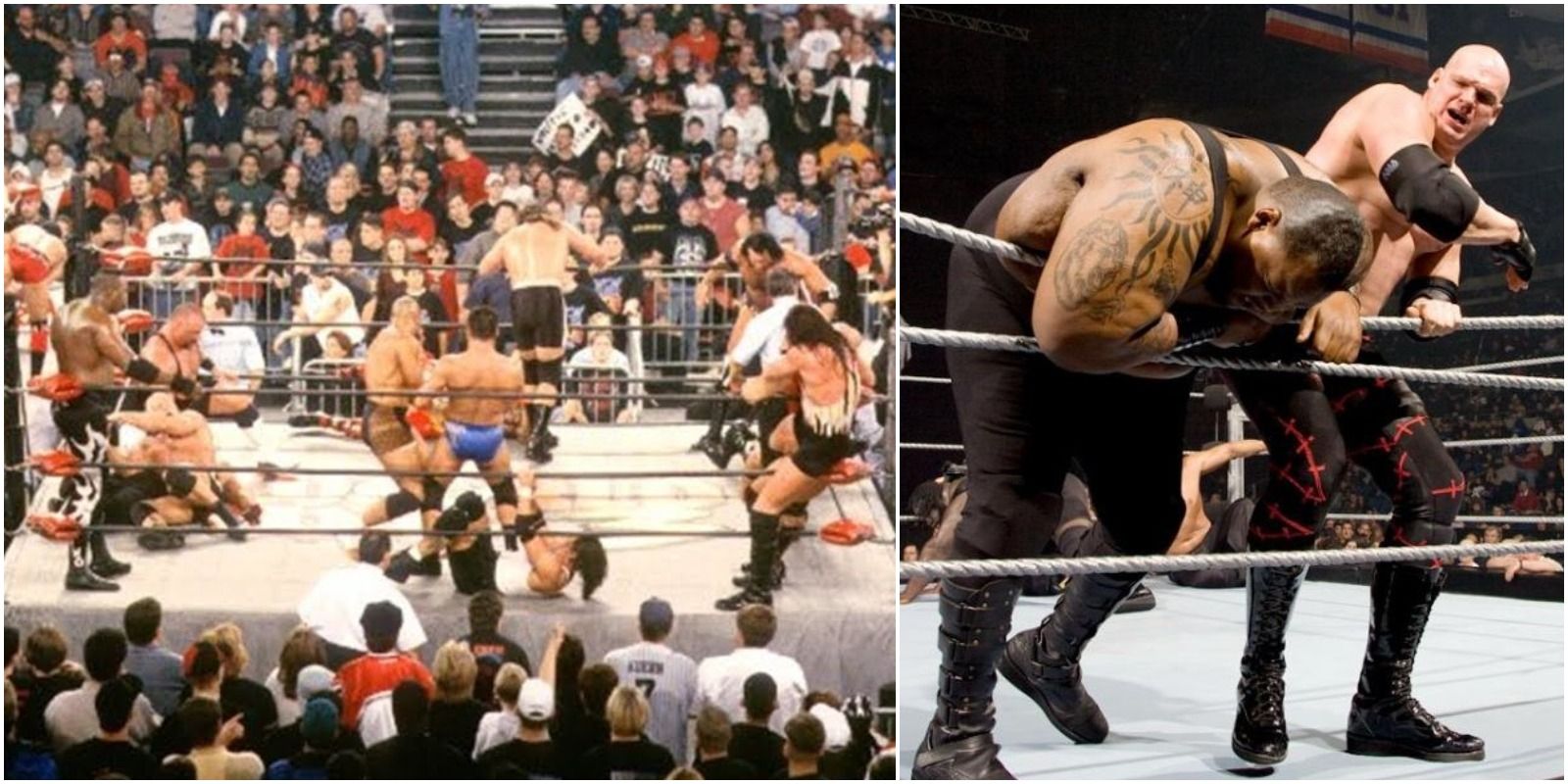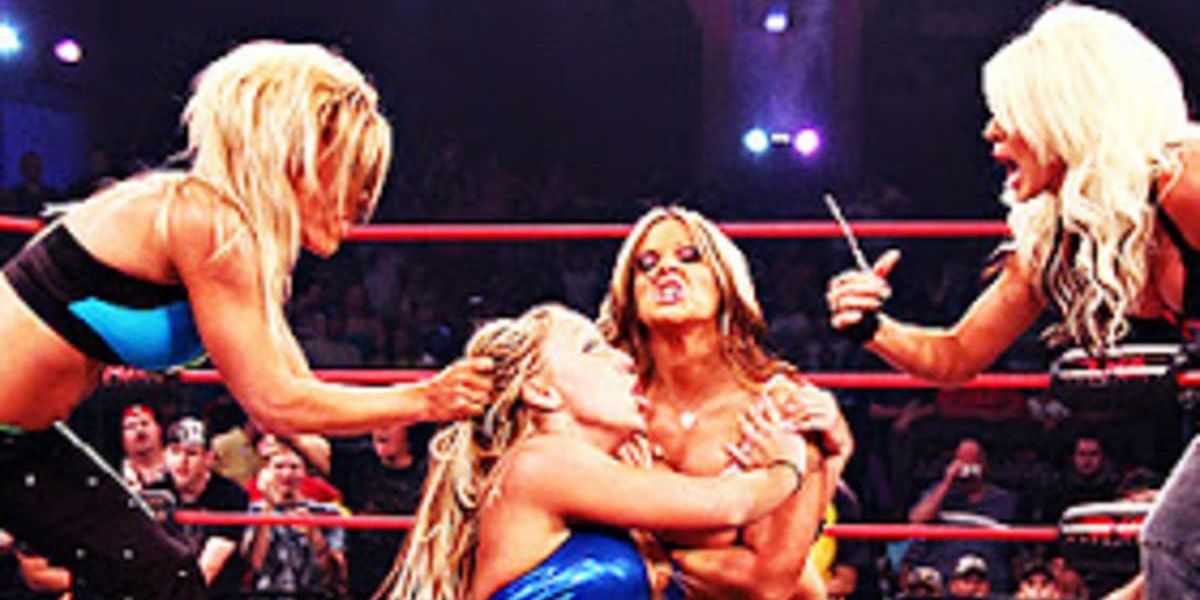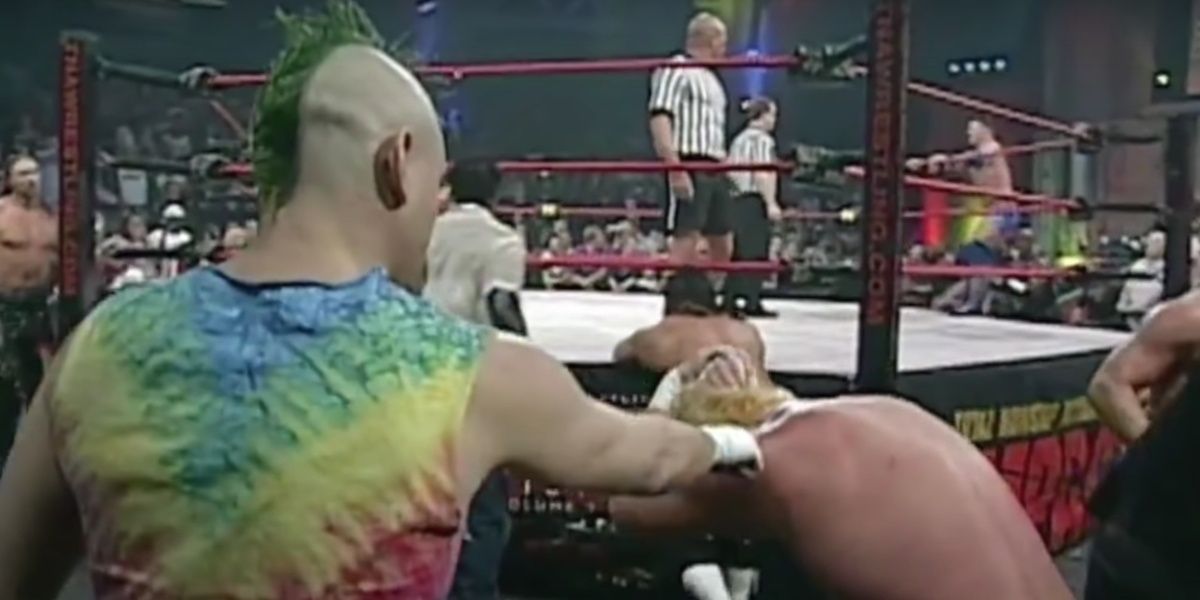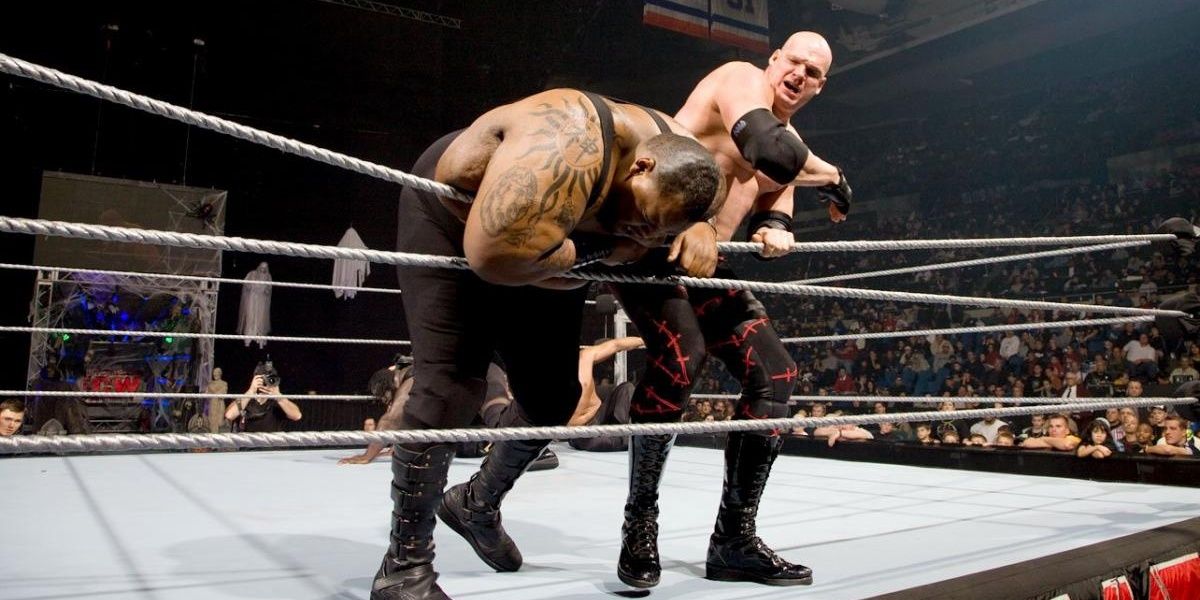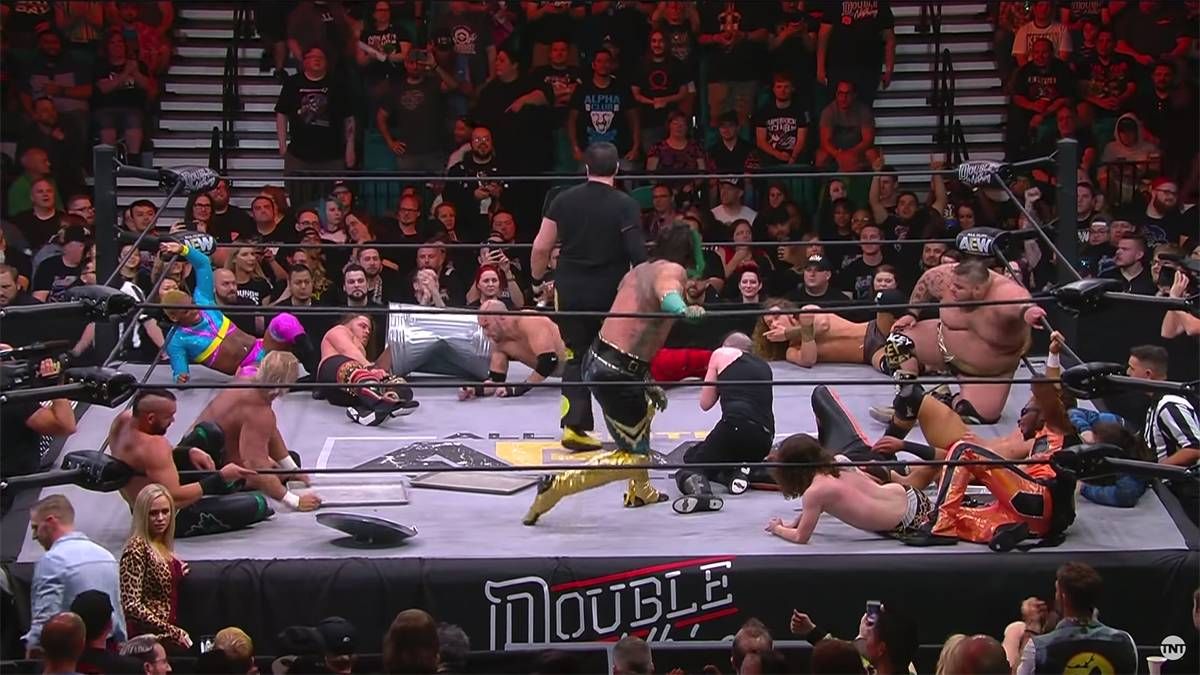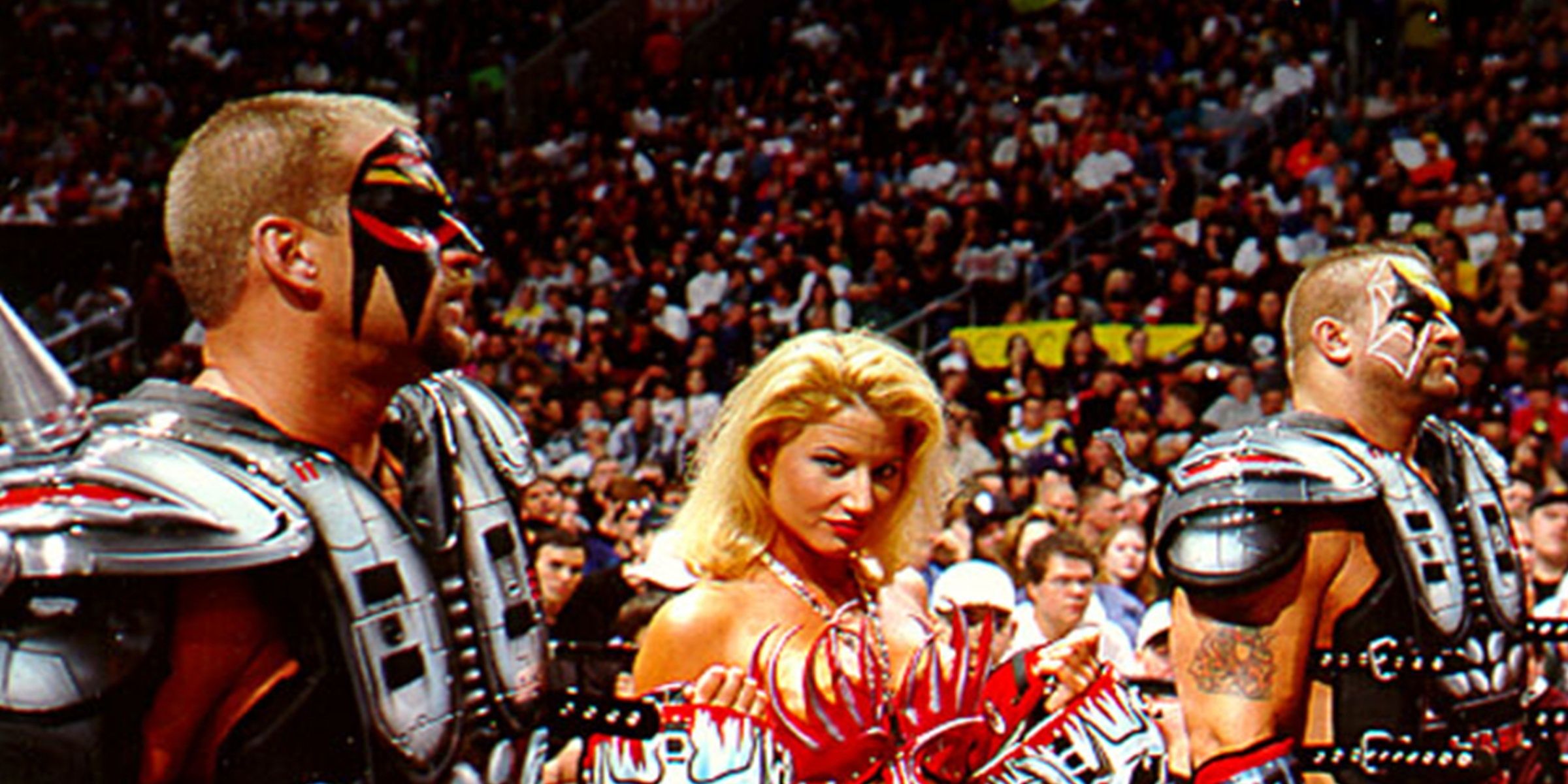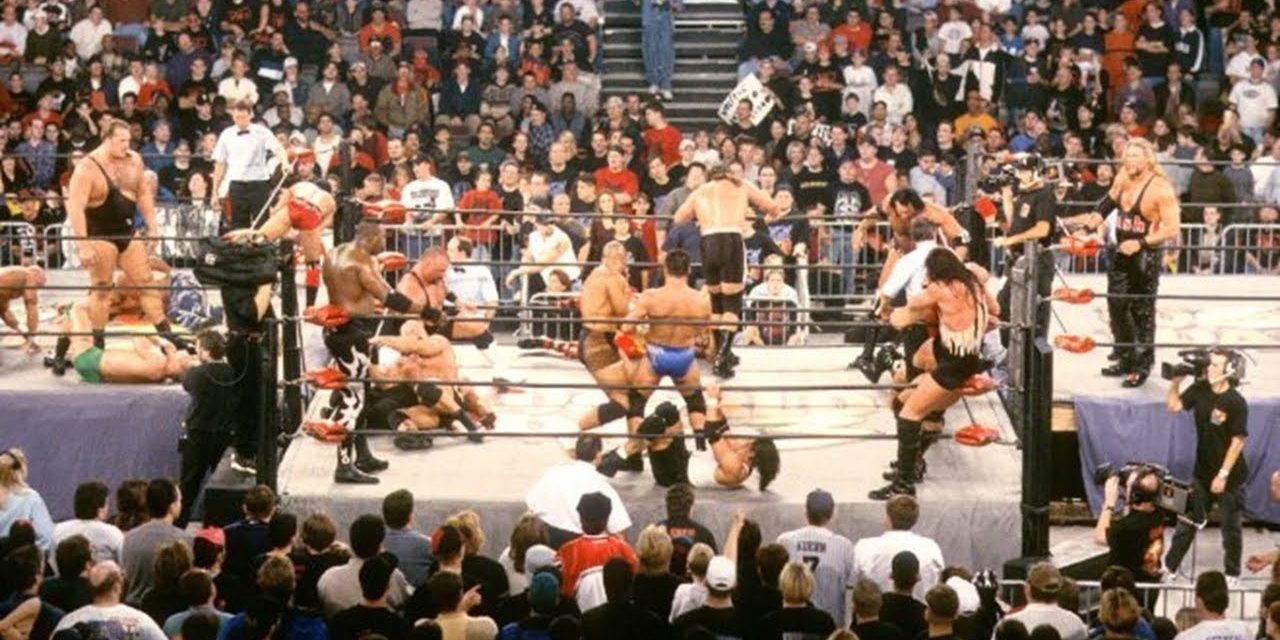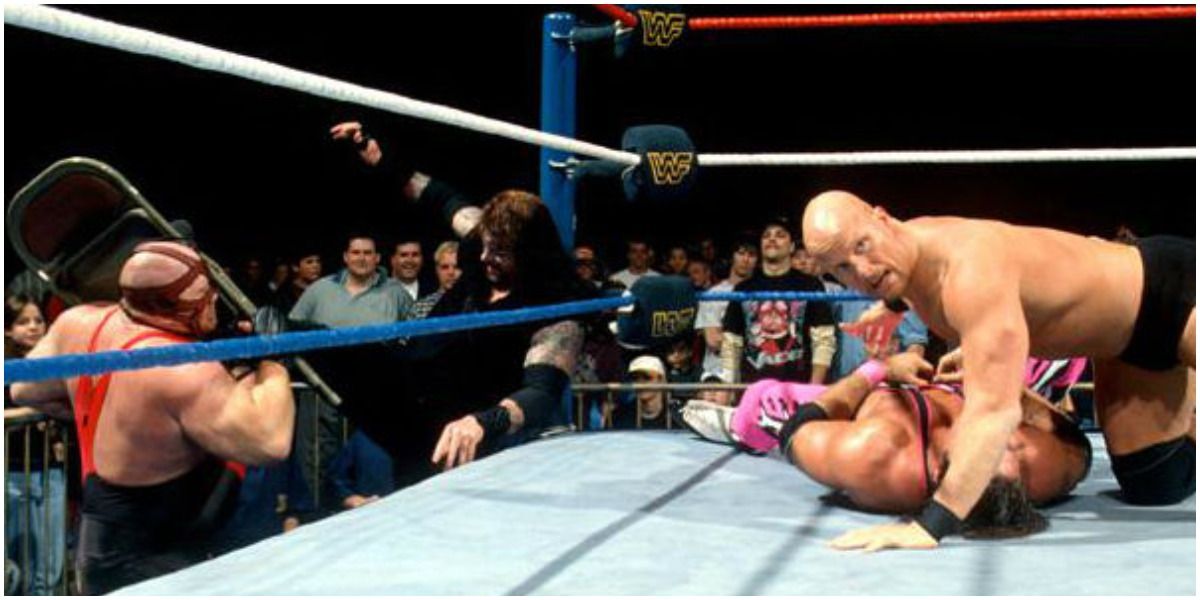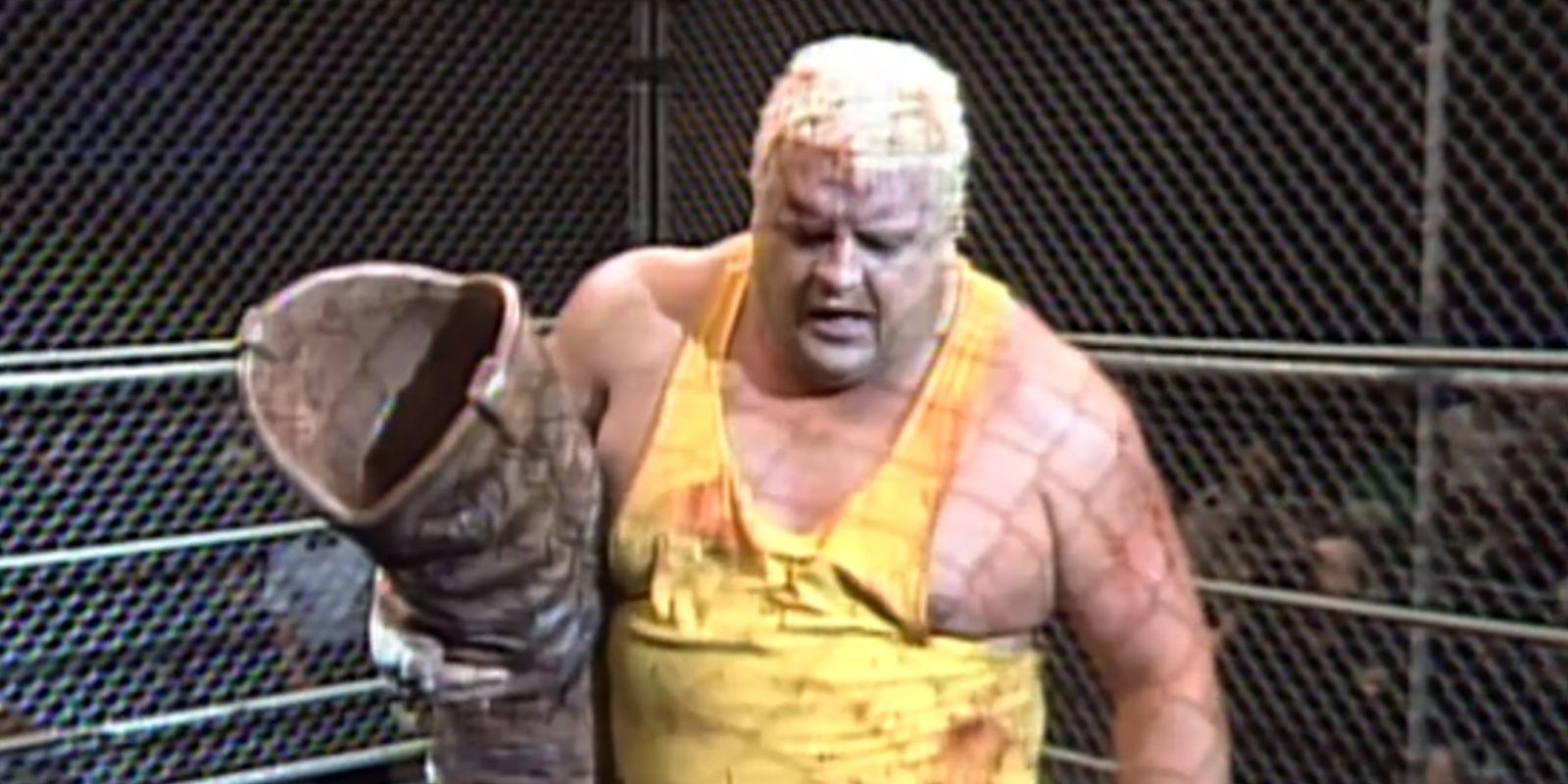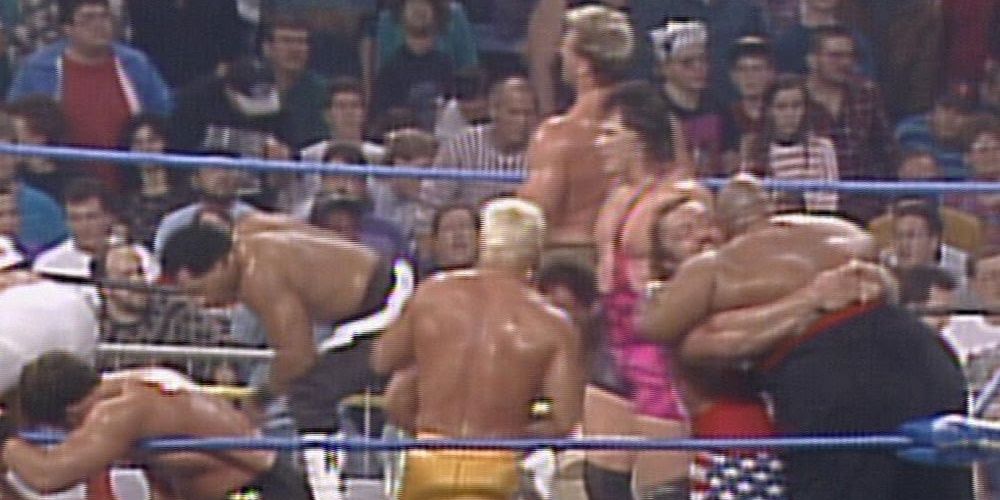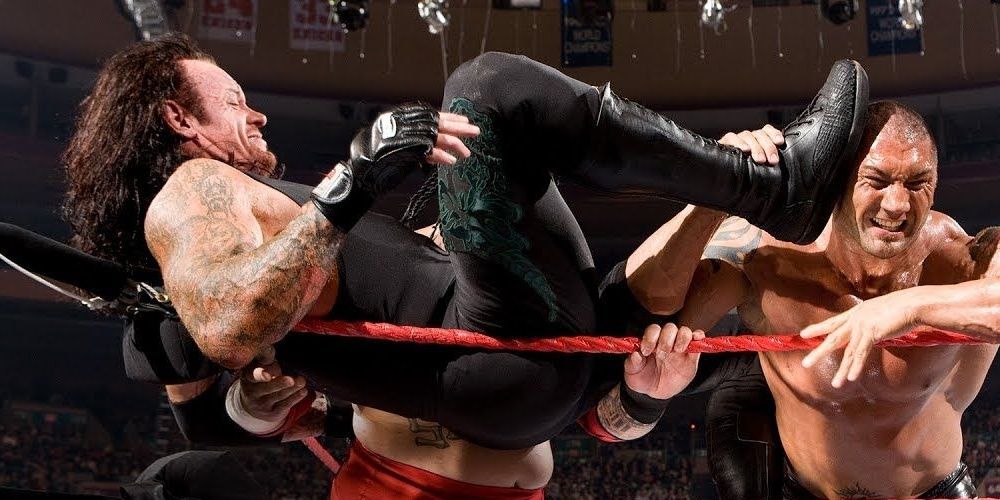There’s a long tradition of battle royals in the wrestling business. These matches are spectacles for the sheer number of people they might involve—often twenty or more. The sheer mass of humanity is not only an attraction but a way of differentiating the action from one on one or tag team matches. Additionally, with so many wrestlers interacting, it invites the development of new storylines based on who eliminates whom.
As time marches on, promotions have tried different spins on battle royal with varying rules, manner of entry, how someone achieves victory, or numbers of participants. Some variants have been great, revitalizing the concept. Others were not so well-conceived, or at least well-executed.
10 TNA Knockout Makeover Battle Royal
Battle royals are simple. Wrestlers throw one another from the ring until there’s one left standing. The concept is, in some ways, actually simpler than a match conducted under ordinary rules with pins, submissions, disqualifications, and count outs.
The TNA Knockout Makeover Battle Royal—a concept the company originated at the Sacrifice 2008 PPV—was the antithesis of simplification. The idea embodied some of the company's worst impulses. A ten-woman battle royal came down to two finalists, who then had a Ladder Match for a title shot. This much was a little complicated, but not necessarily a bad concept. However, things went one step further with the loser of the Ladder Match getting her head shaved. While there’s some merit to trying to tell multiple stories at once, this match’s series of rules and stipulations were more exhausting than entertaining.
9 Reverse Battle Royal
In 2006, TNA debuted the concept of the Revere Battle Royal. Whereas a traditional battle royal is all about getting wrestlers out of the ring, this gimmick match was about fighting one’s way into the ring. Out of a field of eighteen, seven men made into the ring to “win.” Then those seven had a more standard battle royal. The winner got a bye to the finals of a tournament made up of the other six competitors.
If that all sounds convoluted, it’s with good reason. While TNA gets some credit for thinking outside the box with the Reverse Battle Royal concept, but it ultimately didn’t make much intuitive sense for guys to be fighting their way into the ring, and all of the additional stages of competition to follow elevated the affair to absurdity.
8 The Monster Mash
From 2006 to 2010, WWE operated its own version of ECW. There were highs and lows to this run, and Halloween eve 2007 saw some of each. The brand took advantage of some of the big bodies at its disposal to host The Monster Mash Battle Royal. Only four men were involved, but they totaled over 1,500 pounds between them.
Mark Henry won this one-off spectacle, getting the best of Kane, The Great Khali, and Big Daddy V. While the match was far from a classic, there was intrigue to having a battle royal that featured only the kind of the big men who would usually be favored to win. That’s not to mention that none of them was an obvious target for others to gang up on given how imposing the entire four-man field was.
7 Casino Battle Royale
AEW has invented its own spin on the gauntlet-style battle royal, with the Casino Battle Royale, in particular, themed around the organization’s debut PPV, Double or Nothing, from Las Vegas. The concept is nothing if not ambitious with players divided into different card suits, entering the ring in clusters of five, before a “Joker” entrant completes the field.
The Casino Battle Royale idea is fun, but in practice, it has felt like a mess for the random assortment of wrestlers coming to the ring in stages, clunky presentation, and middling execution of these matches—particularly relative to the great matches from AEW that fans have grown accustomed to.
6 Tag Team Battle Royal
One of the values of the battle royal gimmick, in general, is that it protects talents. While the winner accomplishes something, losers don’t necessarily lose face for not having been pinned or forced to submit, rather just ousted the ring.
This element of battle royals only gets amplified in tag team battle royals like the one that one of the greatest tag teams of all time, The Legion of Doom, won at WrestleMania 14, as one team member getting eliminated meant that his partner was out, too. These rules speed up the match, and someone can lose without personally suffering any fall at all.
5 World War 3
For four years, WCW featured World War 3—a sixty-man, three-ring battle royal. There’s one core element of battle royal matches that this one capitalized on and maximized—the sheer spectacle of seeing a lot of wrestlers do battle all at once.
The problem with World War 3 was that, with so many men involved, the action was all but impossible for anyone to follow either on TV or in live attendance until the final few competitors. Still, the match gets credit for an awe-inspiring visual. It also saw high caliber stars win—Randy Savage, The Giant, Scott Hall, and Kevin Nash—to earn title shots, if not the world title itself.
4 Final Four
In 1997, Steve Austin won his first Royal Rumble but did so after having been eliminated when the referees were distracted. This conceit invited Austin, Bret Hart, Vader, and The Undertaker—the last four men from the Rumble—to meet again with the vacant WWE Championship on the line.
The rules weren’t all that special, as this one was basically an unusually small battle royal. The concept of only involving four main event talents, though, and treating the match with all the tension and stakes of a Rumble elevated it. It was also a worthy addition to the sensational matches Hart and Austin put together in their rivalry.
3 The Bunkhouse Stampede
The Bunkhouse Stampede essentially merged the rules of a battle royal with a street fight. Competitors came to the ring in street gear—albeit, disproportionately the cowboy boots and jeans to fit the bunkhouse motif—and were allowed to bring weapons into the proceedings.
Ironically, this concept would probably be better received in modern times than it was in then, as the normalization and more innovative use of weapons has picked up. In practice, the match came across as a bit too chaotic for its own good and looked unfortunately outdated when its last iteration went head to head with WWEs first televised Royal Rumble.
2 Battlebowl
WCW turned to the BattleBowl concept four times in the 1990s—at Starrcade 1991 and 1992, Slamboree 1996, and in its own dedicated PPV in 1993. The gimmick saw random pairings of wrestlers join up for tag team matches throughout the night, with winners advancing to a battle royal.
One of the ways that battle royals can be effective vehicles for creative plans is that they put disconnected wrestlers in positions in which they might cooperate or compete against one another as the situation warrants. BattleBowl amplified that element with partners who started out as rivals like Big Van Vader and Cactus Jack having to team up. Unfortunately, WCW rarely took full advantage of these dynamics to tell interesting stories or push new stars. One exception was Diamond Dallas Page winning BattleBowl in 1996, an important milestone as he started his ascent up the card.
1 The Royal Rumble
The Royal Rumble has been one of WWE’s most popular attractions for over thirty years. The credit largely goes to the late Pat Patterson. By all accounts, he came up with the idea for the gauntlet battle royal to generate excitement with wrestlers being added to, rather than subtracted from the ring. From there, Patterson is credited with masterminding the layout for many Rumbles, including entry order, big spots, and some of the most creative eliminations to tell a cohesive, entertaining story.
Though the first televised Rumble took place in 1988, the event got its legs in 1992, with the vacant WWE Championship on the line. From there, a WrestleMania title shot became the standard prize for this match, adding crucial stakes to what was already one of the best-conceived gimmick matches in wrestling.

